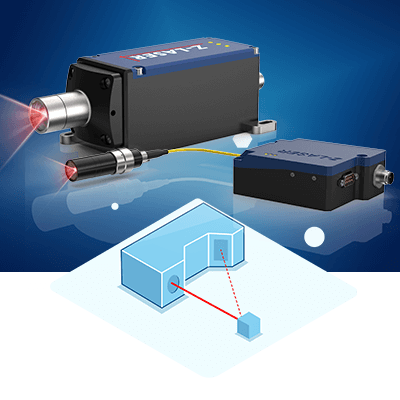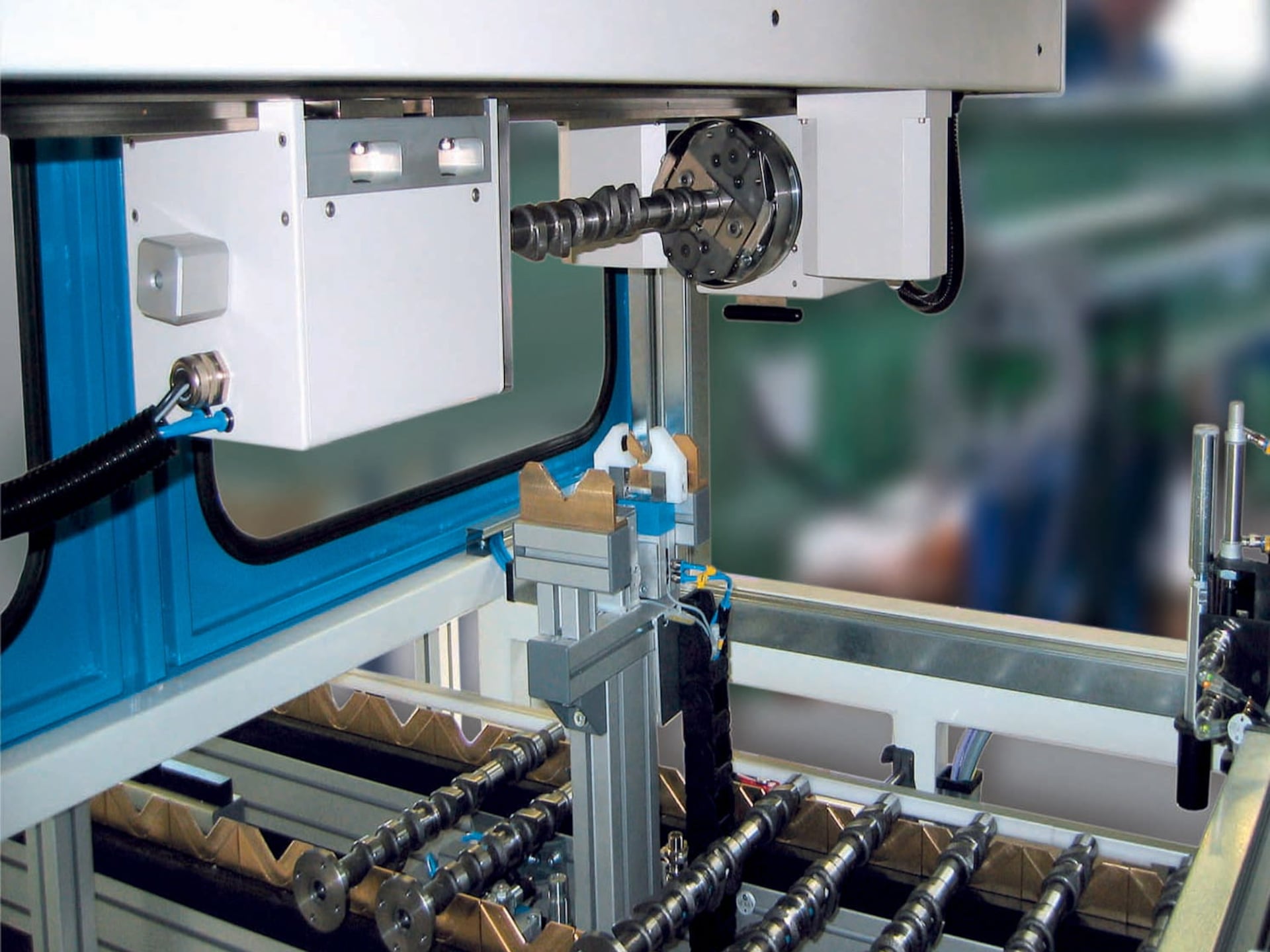Pros of using optical measurement systems in multi-material inspection processes
Pros of using optical measurement systems in multi-material inspection processes
Blog Article
Understanding Exactly How Optical Dimension Solution Enhance Quality Assurance Processes
When you're seeking to enhance quality assurance processes, recognizing optical measurement systems is crucial. These innovations offer exact, non-contact measurements that can transform your examination techniques. By leveraging innovative methods, you can streamline operations and decrease errors. Exactly how specifically do these systems integrate into existing workflows, and what benefits do they bring? Let's discover the key aspects that make optical dimension a game-changer in top quality management.

The Fundamentals of Optical Measurement Solutions
Optical measurement systems play a critical duty in assuring item top quality throughout various sectors. These systems make use of light-based modern technologies to collect specific information concerning physical features, such as measurements, surface area coating, and color. By employing lasers, sensors, and cameras, you can achieve non-contact dimensions that lessen the danger of harmful delicate items.
Comprehending the basics of these systems is fundamental for effective top quality control. They operate concepts like refraction, diffraction, and representation, allowing you to analyze numerous materials and forms. The accuracy and rate of optical measurements make it possible for real-time tracking, which helps you determine problems early in the manufacturing process.
Moreover, these systems can be integrated with software for improved information analysis, developing a complete quality administration approach. By leveraging optical measurement systems, you not just increase performance but additionally guarantee your products fulfill stringent high quality standards, eventually enhancing client satisfaction.
Kinds Of Optical Measurement Technologies
Countless kinds of optical dimension modern technologies are offered, each designed to meet certain requirements in quality assurance. You may encounter laser triangulation, which determines range by examining the angle of a reflected laser beam. This innovation is excellent for capturing exact measurements in 3D room.
Another option is structured light, where you forecast a series of light patterns onto a surface to produce an in-depth 3D version. This approach functions well for intricate geometries.
After that there's interferometry, which can spot minute modifications in surface accounts by examining the disturbance patterns of light waves. This is particularly beneficial for applications calling for nanometer precision.
You may likewise think about optical coherence tomography, which gives high-resolution photos of internal features without damaging the things. Each modern technology offers various requirements, so choosing the best one is vital for accomplishing highest quality control results.
Key Advantages of Optical Dimension in Quality Assurance
When it concerns quality control, leveraging optical dimension modern technologies can considerably improve accuracy and performance. These systems enable you to record in-depth measurements quickly, lowering the time required for assessments. You'll discover that optical dimensions can determine even the tiniest problems that could go unnoticed with traditional approaches, guaranteeing item consistency.
Additionally, utilizing optical measurement systems commonly causes decreased waste and revamp, as you capture issues early in the manufacturing procedure. You'll likewise value the non-contact nature of several optical techniques, which lessens damages to fragile elements during analysis. This flexibility permits for a broader series of applications across different products.
With real-time information collection, you can make educated decisions promptly, streamlining your high quality guarantee processes (optical measurement). Inevitably, including optical dimension into your quality assurance method not just improves performance however likewise boosts consumer satisfaction by providing higher-quality products consistently
Just How Optical Dimension Systems Improve Precision and Accuracy
Optical dimension systems enhance accuracy and accuracy by boosting measurement resolution, enabling you to identify even the tiniest variations. With real-time data evaluation, you can make prompt modifications and decisions, ensuring your procedures stay on track. This mix not just improves item top quality yet likewise enhances your quality assurance initiatives.
Boosted Measurement Resolution
By leveraging sophisticated modern technologies, optical measurement systems significantly enhance measurement resolution, leading to boosted precision and accuracy in quality control. You'll observe a substantial difference in the clarity of measurements, enabling you to identify even the slightest inconsistencies from specifications. Eventually, boosted measurement resolution not just boosts product quality however also maximizes resource application, ensuring that you satisfy client assumptions regularly.
Real-Time Information Analysis
Although typical dimension systems typically count on delayed data handling, real-time information analysis in optical dimension systems revolutionizes the way you monitor high quality. You'll experience better accuracy considering that you can instantaneously contrast dimensions versus predefined criteria. Furthermore, real-time data aids you gather valuable understandings over time, tweak your top quality control processes.
Incorporating Optical Measurement Into Existing Quality Assurance Processes
Integrating optical dimension right into your existing quality assurance procedures can considerably enhance precision and efficiency. By integrating optical dimension systems, you can improve information collection, reducing human mistake while raising the speed of inspections. Start by identifying bottom lines in your production line where optical measurements will provide the most value.
Following, train your team on the new innovation, guaranteeing they understand just how to use the systems successfully. This training will help them analyze outcomes rapidly and precisely.
You ought to additionally develop a method for incorporating optical data into your existing high quality administration software program. This integration permits go to this web-site real-time analytics and coverage, boosting decision-making.
Routinely evaluate the information and responses from your team to identify any kind of locations for enhancement. With these steps, you'll not only boost your quality assurance procedures however likewise foster a society of constant enhancement within your organization.
Case Researches: Successful Implementation of Optical Dimension Solutions
In this section, you'll discover just how optical measurement systems have actually transformed quality assurance in markets like aerospace and vehicle production - optical measurement systems. You'll see real-world examples of how these innovations enhanced precision and effectiveness. These study highlight the substantial advantages of incorporating optical systems right into manufacturing procedures
Aerospace Market Applications
As the aerospace market encounters increasing needs for precision and performance, firms are turning to optical dimension systems to improve their top quality control processes. A leading aircraft producer incorporated optical dimension innovation to evaluate turbine blades, decreasing evaluation time by 50% while improving accuracy.
Automotive Manufacturing Success
Optical measurement systems have additionally made considerable strides in the vehicle manufacturing industry, where precision is key to lorry efficiency and security. By carrying out these innovative systems, producers like BMW and Ford have actually dramatically enhanced their quality assurance procedures. BMW integrated optical measurement for body setting up, ensuring elements fit perfectly, which minimized rework and increased manufacturing effectiveness. Likewise, Ford embraced 3D scanning techniques to discover dimensional errors in engine parts, resulting in fewer flaws and boosted reliability. These study demonstrate just how optical measurement systems empower you to attain tighter tolerances, lessen waste, and raise overall item quality. Accepting these innovations can bring about considerable competitive advantages in today's busy auto market.
Future Fads in Optical Dimension and Quality Assurance
While improvements in innovation remain to reshape the manufacturing landscape, the future of optical dimension and quality control looks encouraging - optical measurement. You'll see a substantial shift towards automation and AI combination, making it possible for systems to evaluate data in real-time. This suggests quicker decision-making and reduced human error, eventually boosting item top quality
Moreover, as 3D imaging technology enhances, you'll take advantage of more precise measurements of complicated geometries, making it much easier to keep limited resistances. The increase of cloud-based options will certainly additionally allow you why not check here to access data remotely, helping with partnership and enhancing procedures.
Furthermore, sustainability will certainly play a crucial function in future advancements. Expect optical measurement systems to focus on power performance and waste decrease, straightening with international environmental goals. By embracing these trends, you can guarantee your quality assurance procedures continue to be innovative, assisting your organization thrive in a significantly affordable market.
Frequently Asked Concerns
What Industries Benefit A Lot Of From Optical Measurement Systems?
You'll find industries such as manufacturing, aerospace, and automotive advantage most from optical dimension systems. These markets depend on accurate dimensions for top quality assurance, guaranteeing items satisfy strict criteria and boosting general functional effectiveness.
How Do I Pick the Right Optical Measurement System?
To choose the appropriate optical measurement system, assess your details requirements, consider the kind of measurements you call for, assess the system's accuracy, and ensure it fits your spending plan and operational needs.
What Are Typical Challenges in Carrying Out Optical Measurement Solutions?
You'll encounter difficulties like integration with existing systems, making sure accurate calibration, training team effectively, and taking care of costs. Determining these hurdles early assists you create methods to conquer them and efficiently execute optical measurement systems.

Exist Training Resources Available for Optical Dimension Technologies?
Yes, there're various training resources available for optical measurement technologies. You can discover online courses, webinars, and workshops used by sector specialists or companies. These resources can assist you successfully apply and utilize these advanced systems.
Exactly How Do Optical Measurement Solutions Compare to Conventional Measurement Methods?
Optical measurement systems offer greater accuracy and rate contrasted to standard techniques. They minimize human error, enable non-contact measurements, and provide real-time data evaluation, making them a lot more effective for different applications in high quality control.
Final thought

Optical measurement systems improve precision and accuracy by boosting measurement resolution, permitting you to spot even the tiniest variants.By leveraging innovative modern technologies, optical measurement systems significantly improve measurement resolution, leading to enhanced accuracy and precision in high quality control.Although standard dimension systems usually count on delayed information handling, real-time data analysis in optical measurement systems transforms the way you keep track of high quality.As the aerospace market deals with enhancing demands for precision and efficiency, companies are transforming to optical his response dimension systems to improve their high quality control processes. Exactly How Do Optical Measurement Systems Contrast to Standard Dimension Techniques?
Report this page